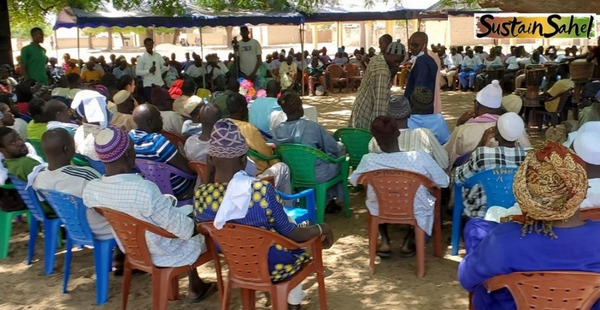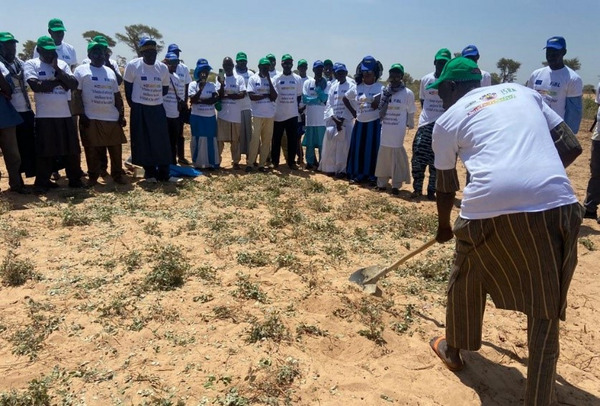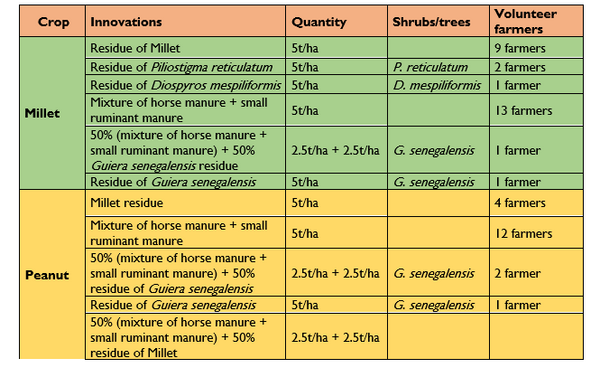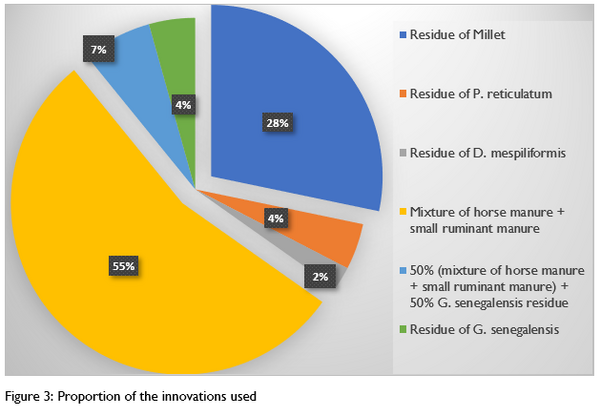Introduction
Sustainable food production is one of the major challenges of the Sahel in the era of global environmental problems such as climate change, increasing population, and natural resource degradation including soil degradation and biodiversity loss. Climate change is among the greatest threats to agricultural systems in the Sahel region. In this region, agriculture is one of the major industries that both supports most people's livelihoods and contributes to climate change. Therefore, a climate-smart approach to sustainable food production is the need of the hour. Integrated crop-shrub-livestock (CSL) systems are gaining attention worldwide in the context of sustainable food production in a changing climate. For the sustainable intensification of these systems, the systematic integration of crops, shrubs, and livestock is a viable approach.
In order to increase the income of smallholder farmers in the Sahel who are confronted with low soil fertility, erratic rainfall, and low availability of agrochemical inputs, a number of technologies under this strategy have been identified. Accordingly, the SustainSahel project is conducting a network of agronomic trials with trees and shrubs in conjunction with farmers in order to accompany them in the valorization of the presence ligneous species (Shrub and trees), so that to they benefit from the advantageous of agroforestry. The integrated crop-shrub-livestock (CSL) system is a holistic approach to farming that uses methods like planting cover crops, integrating livestock and trees into landscapes, and using organic farming practices to improve biodiversity and soil health while reducing reliance on outside inputs like pesticides and synthetic fertilizer. This natural approach can help in climate mitigation and adaptation. Additionally, it is a solution that upholds the human rights of indigenous populations and smallholder farmers.
Using a co-constructive approach, the capacity building of the farmers were strengthened/reinforced through different workshops to share the advantageous of growing crops in association with woody trees (ligneous) from the point of view: i) sustainable management of soil fertility, ii) improving crop productivity, and iii) improving fodder for the livestock. These sessions helped to arouse the interest of volunteer farmers to innovate in their agricultural practices by using the ecological services of the shrubs and trees. An Innovation Platform (IP) was formed with the local actors such as farmer organizations, advisory services, and farming communities involved with milk, meat, cereals, and cotton value chains. This platform is a systematic and integrative process of dialogues among the stakeholders and project researchers.
Implementation of experimental systems among volunteer farmers
In a participatory approach, the actors of the Innovation Platform nominated volunteer farmers from different villages to be the intermediary for technology transfer between farmer-to-farmer. The results obtained from farmers' fields were presented and shared during the animation session of the innovation platform (IP) (Fig.1). Based on these presentations, some volunteers showed interest to duplicate the innovations, and thus a team, including the researchers and the project facilitator at the site, was formed to support the volunteer farmers in implementing the innovation (s) in their field (Fig. 2).
This team was present at the beginning, during and at the end of the growing season to co-monitoring with the volunteer farmers. Missions were organized at the onset of the growing season to ensure the correct application of the innovations. Experimental devices were set up to demonstrate how to install pickets and spread the manure and the organic matter (Fig. 3). A network of fields of volunteer farmers was established to duplicate these innovations in their fields. At least one innovation was implemented in each field (Table 1) (Fig. 4). Yield data from volunteer farmer fields have been collected and will be analyzed to evaluate the effects of the innovations applied. Meetings will be organized between the volunteer farmers and the Innovation Platform so that they can share their first experiences. These meetings will also enable the project team to plan crosscutting actions to develop agricultural advisory and technical services for the farmers of the platform.








 tap and then scroll down to the Add to Home Screen command.
tap and then scroll down to the Add to Home Screen command.